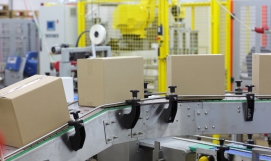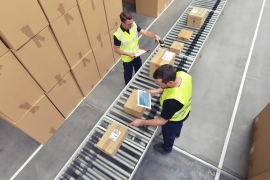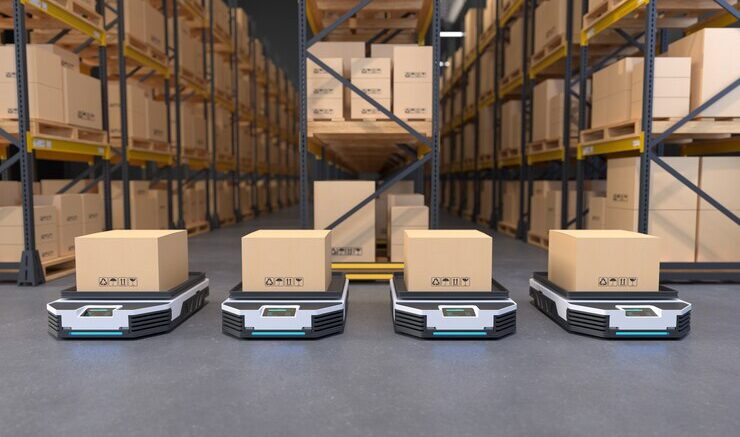
The rise of robotics and automation has rapidly driven change in the shipping industry. Many businesses now turn to automated solutions for various tasks, from managing operations to transporting goods. Robotics and automation have been helping to reduce labor costs, increase efficiency and accuracy, and improve safety and quality. This article will explore four ways robotics and automation are being used in the shipping industry, focusing on how they can help streamline processes and create cost savings.
Automation of Shipping Operations
Robotics and automation are being leveraged by businesses of all sizes in the shipping industry to automate operational activities such as loading cargo onto ships or tracking shipments. They can be programmed to carry out tasks efficiently and accurately, helping to minimize labor costs and improve accuracy. Automation systems can also track fleet performance in real time, giving managers a better understanding of their operations and helping them identify areas for improvement and cost savings.
The use of automation in shipping operations can also improve safety. Automated systems can be programmed to detect hazardous situations and alert operators, allowing them to take proactive measures before an incident occurs. They can also provide better visibility into what is happening during the process, helping managers identify any potential risks or issues that need to be addressed.
Automated Logistics Management
Robotics and automation are also being used to streamline logistics management activities such as inventory control, route planning, scheduling, tracking shipments, and managing freight costs. Automating these processes helps businesses reduce manual errors while increasing efficiency by using data-driven models to optimize routes and determine the best delivery options based on customer requirements. By automating these processes, companies can save time and money while ensuring that shipments reach their destination safely and on time.
In addition, businesses can also use automated logistics management systems for cargo temperature monitoring. By leveraging sensors and advanced analytics, businesses can ensure that their goods are kept at the optimal temperature during transportation. This helps to protect the integrity of the products and prevent them from becoming damaged or spoiled due to extreme temperatures. They can also provide real-time insights into cargo temperature, allowing businesses to make quick adjustments if necessary. By automating these processes, companies can ensure that their goods are delivered safely and on time while also reducing operational costs associated with manual processes.
Automated Vehicle Maintenance

Robotics and automation are also being utilized in the shipping industry to automate vehicle maintenance activities such as inspecting, servicing, and repairing vehicles. Automation can help reduce labor costs and improve safety by using sensors to detect issues before they become significant problems. They can also be used for predictive maintenance, allowing companies to anticipate and avoid costly repairs before they occur.
Automation can also reduce downtime and enable better inventory management. By automating the regular maintenance process, fleets can know precisely when vehicles need service, meaning they can be serviced ahead of time, avoiding costly repairs due to neglect or inadequate servicing. They can also monitor a vehicle’s performance and track and log data digitally, allowing fleets to detect minor issues and make changes as needed quickly. This helps fleets manage their time and resources while keeping vehicles running smoothly and efficiently.
Autonomous Vessels
Robotics and automation have been increasingly utilized in the shipping industry to develop autonomous vessels. Autonomous vessels are powered by advanced navigation systems that use GPS technology, cameras, and lasers to navigate without human input or intervention. This allows ships to safely travel long distances at high speeds while significantly reducing operating costs. They also reduce the risk of accidents and help to improve efficiency, allowing businesses to transport goods more quickly and reliably.
Autonomous vessels also have a positive environmental impact, using fuel more efficiently and producing fewer emissions than traditional ships. Additionally, their advanced navigation systems help to avoid collisions with other vessels and marine life, helping to reduce the threat of damage or injury from shipping traffic in busy waterways. They can operate under extreme weather conditions, such as thick fog or strong winds, which helps reduce the risk of ships running aground.
Furthermore, autonomous vessels can be integrated with advanced data systems to provide real-time information on vessel performance and efficiency. This allows businesses to monitor their fleet more efficiently and make informed decisions about how best to manage resources. Additionally, you can use these data systems to detect potential vessel problems and take corrective action before they become an issue.
In Closing
Robotics and automation are proving to be valuable assets for shipping industry businesses. Automation can help reduce labor costs, improve vehicle maintenance efficiency and accuracy, and provide real-time monitoring of vessel performance and efficiency. Autonomous vessels are also becoming increasingly popular as they can travel further distances at higher speeds while producing fewer emissions.

Be the first to comment on "The Contributions of Robotics and Automation in Shipping"